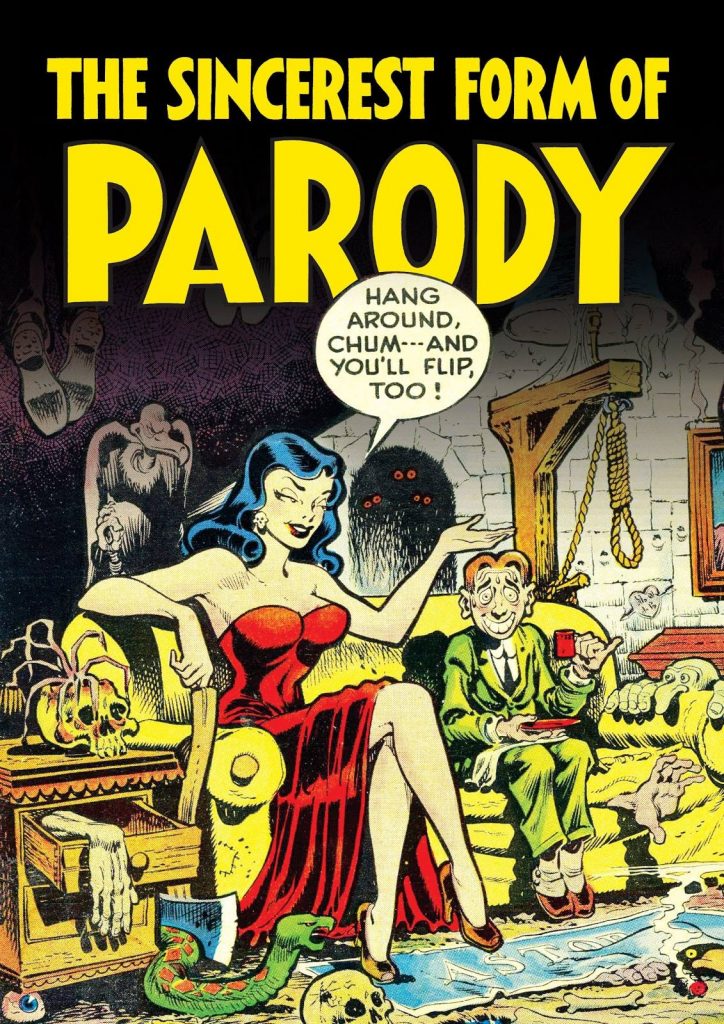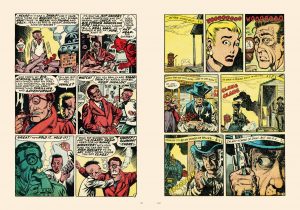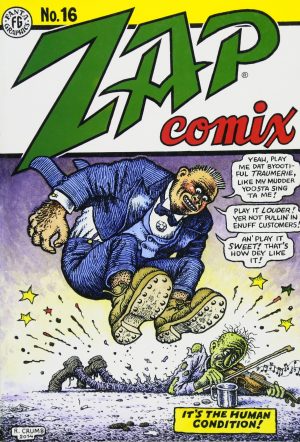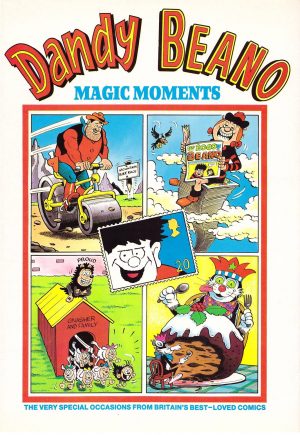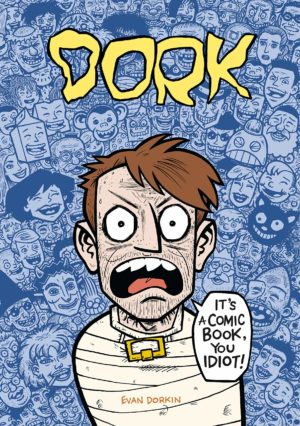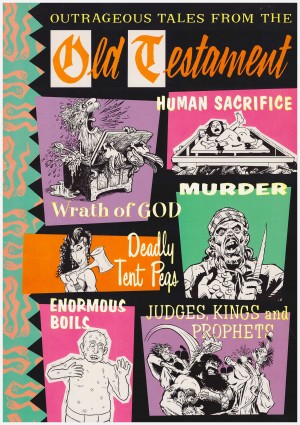Review by Frank Plowright
Genuine breakthroughs in comics are rare. Superman introduced the superhero. Young Romance was astonishingly successful, but via importing an already proven genre to comics. The 1960s Underground movement was more original, but most of its primary creators took their lead from the satire of Harvey Kurtzman’s Mad. That also adapted an existing form, but what conferred originality was Kurtzman’s mind, able to hone in on the essence of something and parody it with style and precision. It was a talent that escaped the many imitators published when Mad became a phenomenon, yet occasionally these also had something to offer, most frequently excellent art. In addition to the artists mentioned below, there’s notable work from Bill Everett, Jay Disbrow, Al Hartley, Carl Hubbell, and William Overgard, while the entirety of Ross Andru and Mike Esposito’s Get Lost has been reissued. With John Benson curating, The Sincerest Form of Parody presents a selection of strips from those short-lived imitators.
Panic! had a head start on most Mad imitators, also being published by EC, so providing Al Feldstein with access to the Mad artists Jack Davis and Will Elder among others, but his parody is more obvious than Kurtzman’s equivalent. He saw what everyone saw, whereas Kurtzman brought items out that weren’t obvious. The sample spread features the work of Hy Fleischman and Howard Nostrand, neither very well known to fans as their work appeared for more obscure publishers. Fleishman is busy and adaptable, but Nostrand is a real craftsman. You don’t need to know the film High Noon to appreciate his cartooning, caricature and storytelling. Likely to have been written by Nat Barnett, and definitely owing something to the Mad storytelling method, this appeared before Kurtzman’s parody of the same film. Benson devotes 25 pages to Nostrand’s elegance, and each of them is beautifully constructed. He later prioritised commercial art.
Satire depends on audience familiarity and on contemporary cultural reference. As pointed out in editor Jay Lynch’s introduction, one publication entirely missed the point by parodying a hit song from fifteen years previously, when most prospective readers were in their infancy at best. It’s relevant because large chunks of what was being parodied in these 1950s strips has long been consigned to obscurity. Does anyone under fifty know who Clark Gable is, never mind why his dressing in a tiger suit would be funny? Benson does his best to avoid strips where many jokes no longer fly. When the classics are parodied or when the theme is still recognisable, the content still has an appeal. Norm Maurer’s version of Doctor Jekyll & Mister Hyde transforms the doctor into a giant mouse when encountering cheese, while Jack Kirby’s medical pastiche still resonates. Also of interest is Otto Binder parodying Captain Marvel whose regular stories he’d written in the 1940s, with Andru and Esposito exaggerating for all they’re worth.
Benson completes the book with an authoritative contextualising essay, including writing credits where possible. This is a thoroughly enjoyable compilation with used copies highly priced, although the digital equivalent is available. Time for a reprint Fantagraphics?
